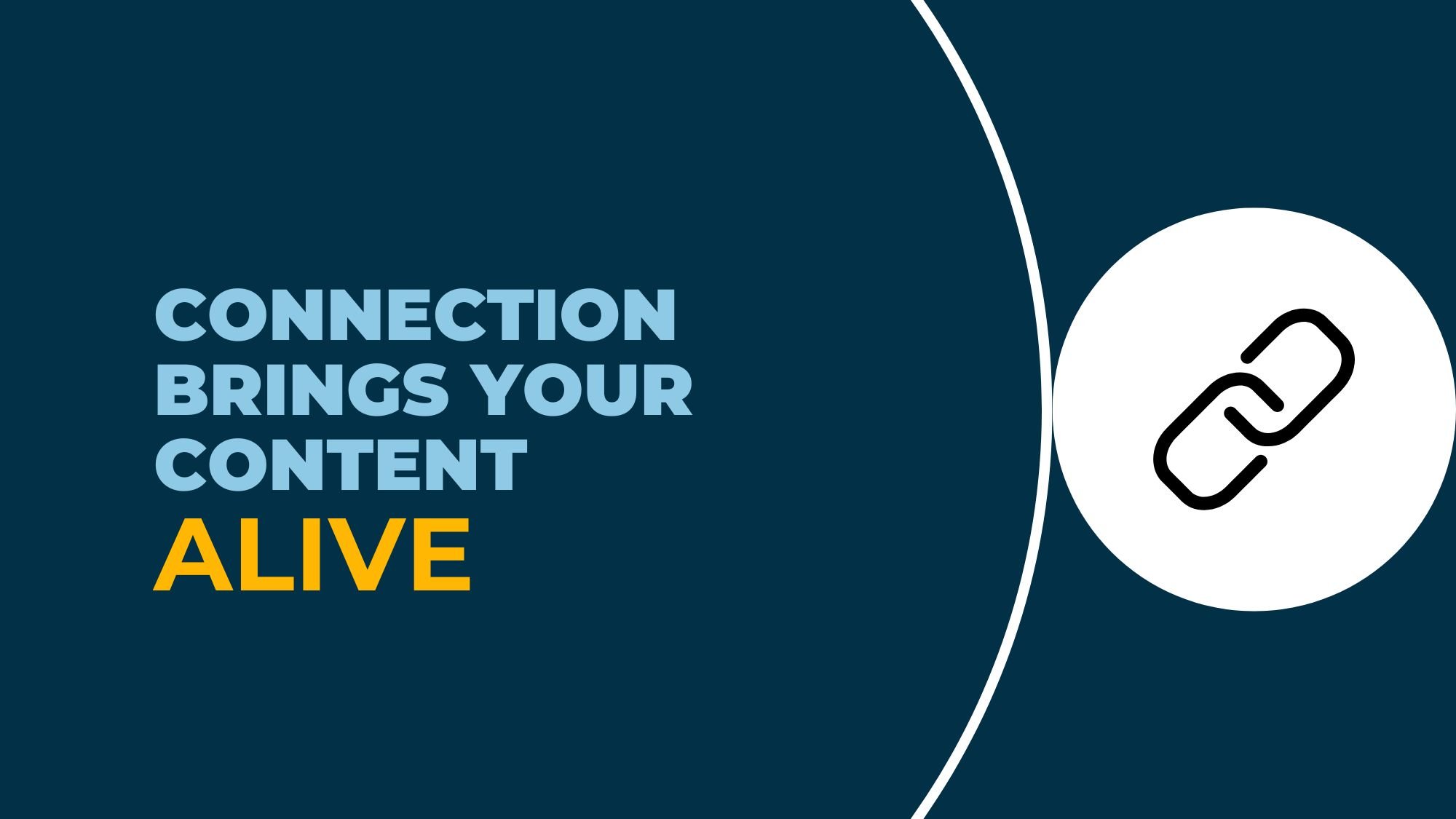Bring your content "alive" through connection

Too many "inspirational" events fall flat...
My teammates know that one way to really bug me is to send me to an event where I have to be silent to the whole time.
It's not that I love to talk and be the centre of attention.
In fact, given the choice, I prefer to listen. (But listening requires speaking...!)
One such event popped into my calendar this week. An online webinar on a topic that really interested me with some fascinating speakers.
The thing with fascinating speakers is they tend to attract fascinating audience members too.
And that's where so many potentially inspirational events fall flat.
I spent part of the event looking at the big list of participant names in the Zoom screen - wishing I could connect with them!
But I left the event having said narry a word to anybody.
(Well, that's not quite true... I did post a question in the chat that never got answered. 😅)
One positive is it left me pondering the relationship between content and connection.
Often it's as though we presume it's one or the other. When of course they strengthen each other.
Content comes alive through connection
I think of it like this.
Connection is the electricity that brings ideas to life.
Without connection, your ideas are - just that... ideas.
And ideas are cheap. Ideas are easy.
I can find your ideas in 2 minutes via Google or via ChatGPT.
Connection helps us to make sense of ideas, and inspires us to act on them.
Connection is more than just person-to-person
The kind of connection I'm talking about isn't just about connecting one person to another.
To make sense of your content, I need to understand how it relates to my context. I need to connect your content to who and what I already know, think and feel!
This takes your content from interesting, and allows it to become integrated.
Some alternatives to the typical Lecture + Q&A
Let's come back to the favoured lecture + Q&A format.
It it easy? Yes.
Effective? Not really.
Let's consider some alternatives.
At bare minimum... moderate the Q&A
Here's a representation of your typical Lecture + Q&A. It's dominated by the host (in pink) and the speaker (in purple), with one or two questions at the end.

If you're still wedded to the typical Lecture + Q&A format, you can at least improve it.
What usually happens with the Q&A part is that either:
- Nobody can think of any good questions on the spot or is too shy to ask them, so you have an awkward silence
- Somebody jumps straight in with a long-winded opinion disguised as a question. You're taken straight down a rabbit hole and it almost becomes like a two-person discussion.
- Time runs out with many questions unanswered.
You can avoid or improve on this by:
- Letting people submit and vote on questions with a tool like Slido or Mentimeter
- Inviting people to pair up and come up with one great question between them. This can improve the quality of questions dramatically.
- Moderate the Q&A by explaining what a "good" question looks like and jumping in if people start to go off on a rant!
Integrate the Q+A into the lecture
Another alternative is to pepper the Q+A throughout the lecture. And just as salt and pepper enliven that average tomato pasta of yours, so too does a well-moderated Q+A throughout your lecture.

This requires a strong host or moderator.
It helps to brief the audience on how to ask good questions. And don't be afraid to jump in if their question is taking a while to arrive!
Flip the script
A more creative method altogether is to flip the script entirely.
Instead of sharing the content during the event, share it ahead of time.
Then you can spend your 60 minute event interacting, applying and integrating the content.

Teachers call this "flipping the classroom". They use websites like the Khan Academy to inform or lecture students outside the classroom. And then their classroom time becomes about interaction, application and integration.
You can achieve the same thing.
Record your special guest ahead of time. It doesn't need to be flashy. Simply hop on a Zoom call and get them to 'do their presentation'.
Edit it afterwards to cut out the fluff and share that with your event attendees a few days beforehand.
Remember - content needs connection
The details in this blog post are helpful - sure.
But what I hope you take away from this is the idea that good content comes alive through connection.
By creating time for connection, you're not wasting people's valuable time. Far from it, you're helping them to integrate the content into their context.